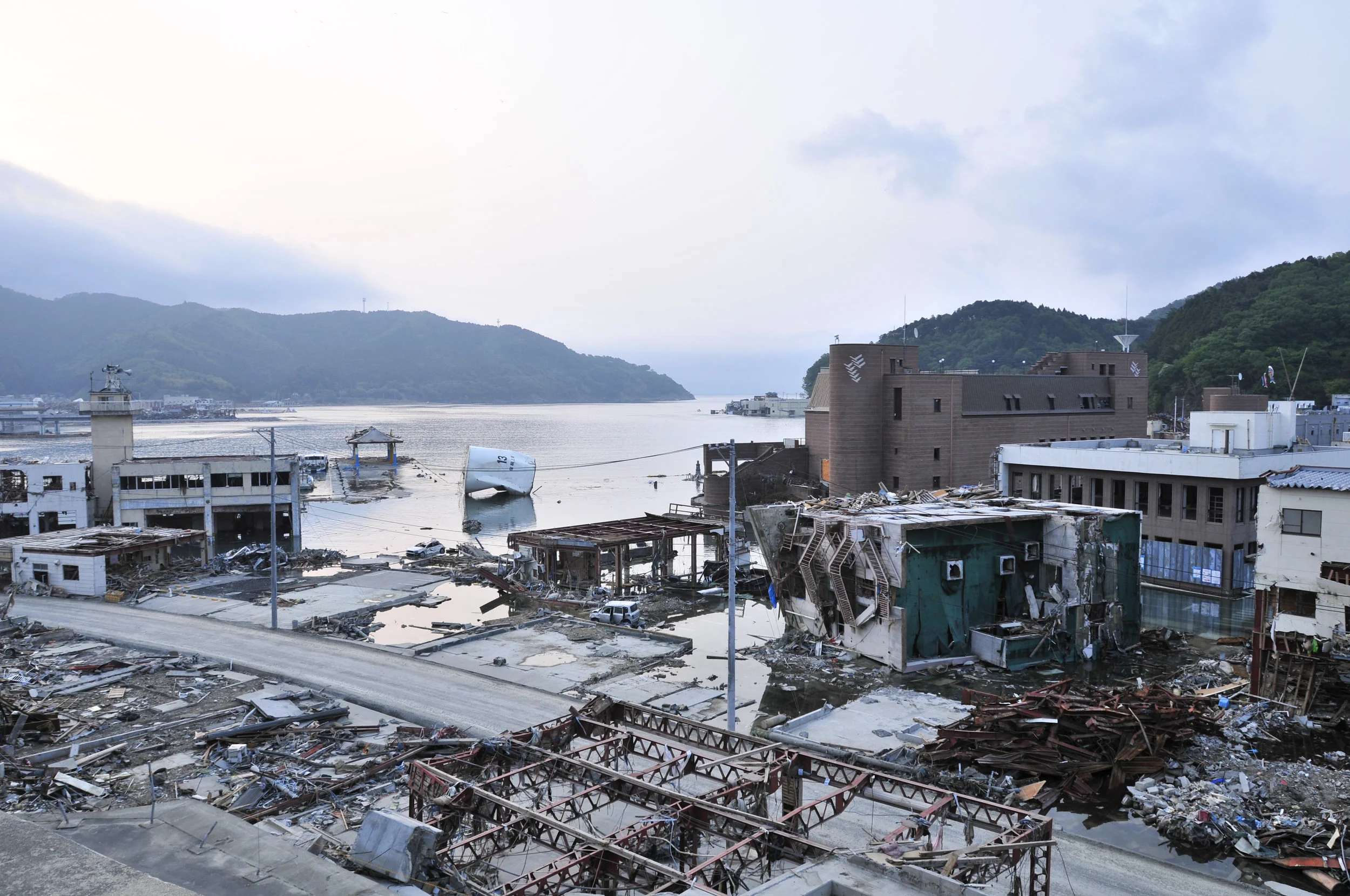By 4.00am we’ve made the Fujikawa Interchange in Shizuoka. Walking back to the car from the loo I pause under the blooming cherry blossom trees illuminated by the yellow street lamps of the highway service center, and gaze over toward Mt Fuji, her snowy peak a mere silhouette in the chilly darkness. For the first time in 24 hours I take in a deep breath and wonder if this would be the last of Japan’s clean air I’ll inhale.
The next few days, weeks and months are a blur. Thousands of kilometers traveled, new places visited. We aren’t tourists cruising the open road. We’re exiles wondering if we can ever return.
My husband helps deliver aid to Sendai and Fukushima. His diary reads:
There are no words to describe the devastation: nothing but death and destruction. Cars rest atop rooftops. Survivors search through mud, hoping they will find heirlooms, photos, family remains
People wait in lines at petrol stations for hours, sleeping in their cars waiting through to the next day. Petrol is delivered and rations are set at 20L. It’s not enough to evacuate.
We drive to the sea. The vast ocean that has given us surfers so much joy has now come and taken so much. Again, we are silent. Amongst the destruction lone waves break quietly into shore. No surfers ride them today.
Unimaginable amounts of radiation was leaked and then deliberately poured into the sea. Now surfers all over the Kanto region head away from the ocean.
More than a month after the quake, I too have not been in the ocean. A piece of me is missing.
A story is told of a baby born to a surfing family days after the disaster. He is named ‘Asahi’, Sunrise. A bundle of warmth and hope amid the freezing cold and settled worry. Lone waves continue to break, un-surfed.







